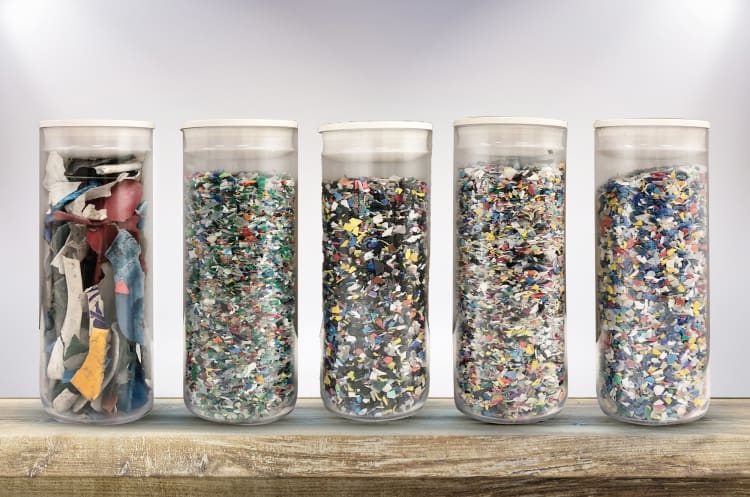New opportunities for contributing to a circular economy
The ability to detect black plastics means that there will be more of them in the recycling chain. “We have to create a demand for these post-consumer black materials. Obviously, there are limitations: they can’t be used to produce white products, and they can’t always make food-grade packaging. We have to collaborate across the industry value chain to find other ways to use black plastics. It won’t necessarily be for consumer-facing products, but they could be used to manufacture items such as pallets, buckets or railroad ties, etc. It’s about sorting the plastic effectively and providing it as a feedstock to the advanced recycling sector.”
Chemical recycling companies are an excellent example of operations that could make good use of these materials: “They are looking for polyethylene and they don’t care if it has black because they break it down into a gas and convert it into oil, which is transformed into virgin plastic – closing the loop of a circular economy.”
It is also important to extend this cross-industry collaboration to packaging designers and producers. “We need a conversation between manufacturers and recyclers where they address together considerations such as: does the consumer really need or want black packaging? If the material can’t be recovered, what matters the most to the consumer? Do they want a close loop solution for the package they buy, or do they care more about how it looks? Such an approach will help address the black plastic problem and get a better recovery of the waste stream.”

Black plastics processing: a demand set to continue to grow
The latest technological developments and the consumer pressure for more recycled content in packaging are bound to drive continued growth in demand for sorting plants capable of recovering all blacks out of the waste stream.
Stadler has experienced a sharp increase in the interest in these solutions and it is at the heart of this evolution in the industry: “We now have multiple partners that have developed technology to detect black plastics, so we have the ability to design systems to recover these materials tailored to our individual customers’ operational requirements and capital investment,” says Enrico Siewert. “We have completed several projects for some of the most advanced light packaging recycling plants in Europe, and we are working to develop many more.”
“The demand is extremely strong for this technology, and I see this trend continuing in the future. More black plastic is going into the waste stream and the technology to mine these materials is catching up fast,” concludes Enrico Siewert.



